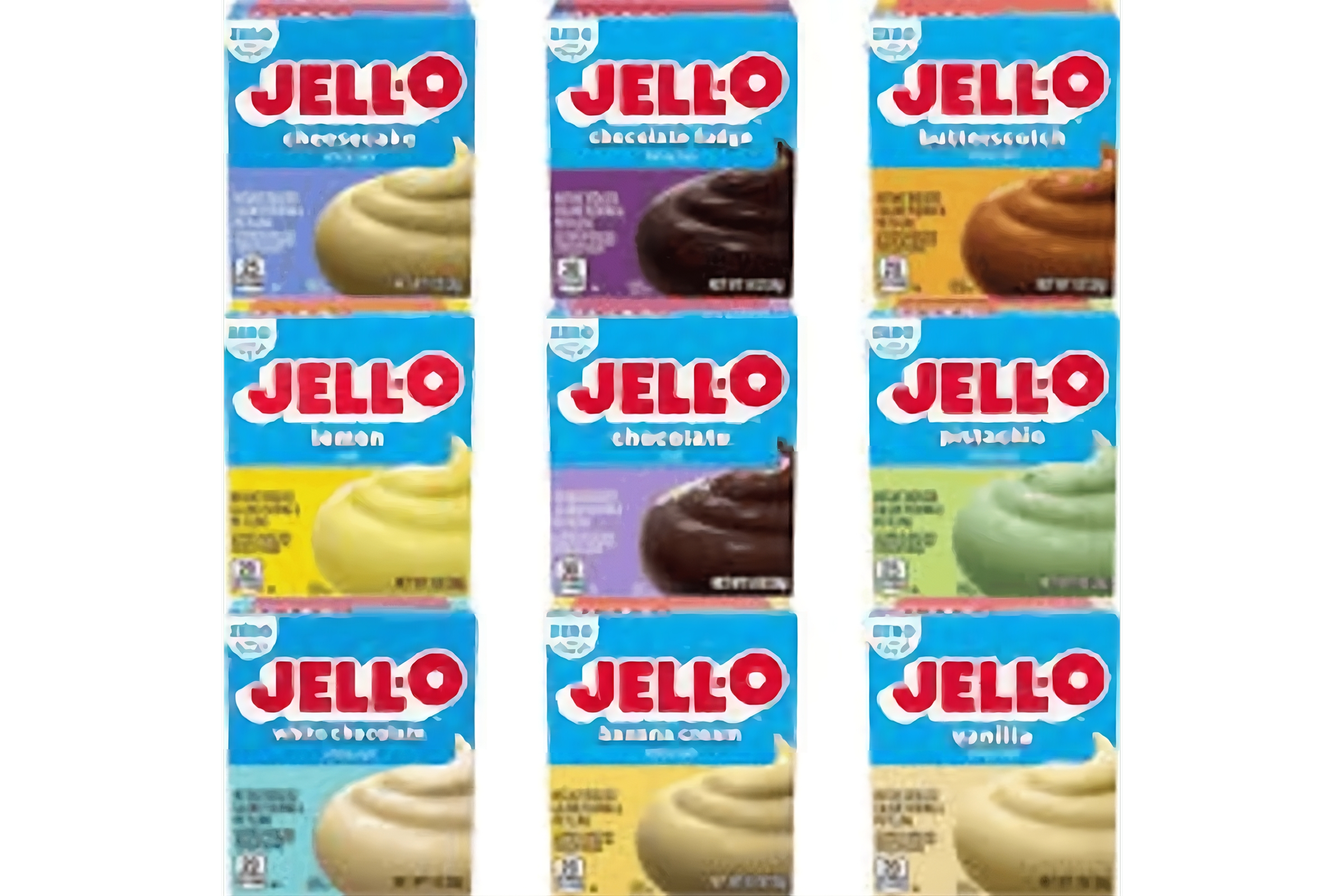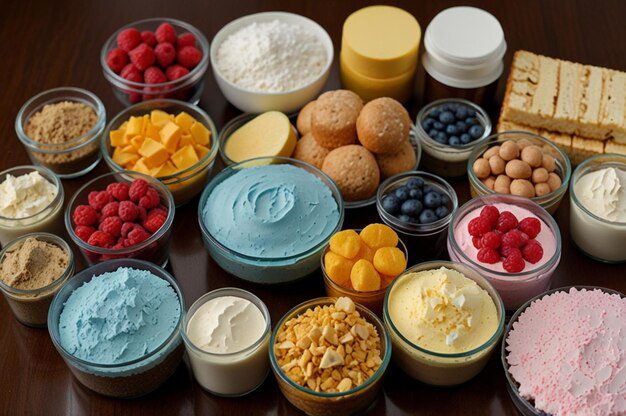
Jello pudding is a beloved, versatile dessert that has delighted taste buds for generations. Known for its smooth, creamy texture and an array of delicious flavors, it’s a quick and easy dessert perfect for any occasion. In this ultimate guide, we’ll walk you through everything you need to know about Jello pudding: its history, different types, nutritional information, and even creative ways to incorporate it into your recipes. Whether you’re looking for classic flavors, sugar-free alternatives, or new ways to enjoy this creamy treat, we’ve got you covered!
What is Jello Pudding?
Jello pudding is a classic dessert that features a velvety, smooth texture and rich flavor. It’s typically made by mixing pudding powder with milk and letting it set in the refrigerator. Available in a wide variety of flavors, it’s not only enjoyed as a standalone treat but also plays a key role in many recipes, from pies to layered desserts. Whether you prefer instant or cook-and-serve varieties, this dessert is loved by people of all ages.
Types of Jello Pudding
Jello pudding comes in a variety of flavors, each offering a unique taste and texture. Whether you prefer classic options or are looking for sugar-free alternatives, there’s a pudding for every preference. Here’s a quick look at some popular types:
Classic Flavors
- Vanilla Pudding: A smooth and creamy favorite, perfect on its own or as a base for other desserts like trifles or parfaits.
- Chocolate Pudding: Rich and indulgent, this flavor satisfies chocolate cravings and is ideal as a filling for cakes or pastries.
- Butterscotch Pudding: With its sweet, caramel-like flavor, butterscotch pudding pairs well with fruits or baked goods.
- White Chocolate Pudding: Offering a sweeter, smoother alternative to regular chocolate pudding, this flavor can be enjoyed on its own or in layered desserts.
Sugar-Free Options
- Sugar-Free Vanilla Pudding: A guilt-free version of the classic vanilla, made with artificial sweeteners.
- Sugar-Free Chocolate Pudding: A healthier choice for chocolate lovers, offering the same rich taste without the added sugar.
These are just a few examples, but there are many other variations of Jello pudding. To dive deeper into all the different types, including seasonal flavors and instant versus cook-and-serve options, learn more here!
Different Formats of Jello Pudding
Jello pudding comes in several convenient formats to suit different needs and preferences:
1. Instant Jello Pudding Mix
Instant Jello pudding mix is designed for quick and easy preparation. Simply combine the pudding powder with cold milk, whisk until smooth, and allow it to set in the refrigerator. This type is perfect for those who need a fast dessert solution. Popular flavors include vanilla, chocolate, and butterscotch.
2. Ready-to-Eat Jello Pudding Cups
Ready-to-eat Jello pudding cups provide maximum convenience. These pre-packaged cups are available in various flavors and are perfect for on-the-go snacking. They are an excellent option for packed lunches or quick after-school treats for kids.
3. Cook and Serve Jello Pudding Mix
Cook and serve Jello pudding mix requires preparation on the stovetop before chilling. This method results in a richer, creamier texture compared to instant pudding, making it suitable for traditional pudding recipes. It’s a great choice for those who enjoy a more authentic pudding experience.
Sugar-Free Nutrition
Sugar-free Jello-pudding is an appealing option for those looking to cut down on sugar consumption. Here’s a detailed look at its nutritional profile:
Calories:
Sugar-free pudding generally has fewer calories compared to regular pudding. A typical serving contains around 60-70 calories, whereas regular pudding can have 100-150 calories per serving.
Sugar Content:
Sugar-free varieties use artificial sweeteners like aspartame or sucralose instead of sugar. This results in a significant reduction in sugar content, often bringing it to zero or near-zero levels.
Fat:
Sugar-free pudding is typically low in fat, making it suitable for those monitoring their fat intake. This is advantageous for those on low-fat diets.
Carbohydrates:
The carbohydrate content is also lower in sugar-free pudding compared to regular pudding. This can be beneficial for individuals on low-carb diets or those managing their carbohydrate intake.
Jello Pudding Mix Ingredients

The carbohydrate content is also lower in sugar-free pudding compared to regular pudding. This can be beneficial for individuals on low-carb diets or those managing their carbohydrate intake.
Sugar:
Provides sweetness in regular pudding mixes. In sugar-free versions, artificial sweeteners replace sugar to reduce calorie content.
Modified Food Starch:
Acts as a thickening agent, giving the pudding its creamy texture. It helps the pudding set properly and achieve the desired consistency.
Artificial Flavoring:
Adds the characteristic flavors to the pudding mix. Flavors such as vanilla, chocolate, and butterscotch are created using a combination of artificial and natural flavorings.
Coloring:
Enhances the appearance of the pudding. Caramel color is often used in chocolate pudding to give it a rich, dark hue.
Nutritional Information
The nutritional profile of it can vary depending on the flavor and preparation method. Here’s a general overview of what you can expect:
Calories:
Regular Jello pudding typically contains around 100-150 calories per serving. Sugar-free versions have fewer calories, making them a lighter option.
Fat:
The fat content is generally low, though it can vary depending on the type of milk used in preparation. Whole milk will add more fat compared to skim or low-fat milk.
Protein:
it contains minimal protein, as it is primarily made up of sugars and starches.
Carbohydrates:
The carbohydrate content is relatively high due to the presence of sugar and starches. A typical serving can contain around 20-25 grams of carbohydrates.
Summary
It is a timeless dessert that offers a wide array of flavors and formats, from classic vanilla and chocolate to sugar-free options for health-conscious individuals. Whether you prefer the convenience of instant pudding or the rich, creamy texture of cook-and-serve, there’s an option for everyone. Its versatility allows it to be enjoyed on its own or incorporated into a variety of dessert recipes, making it a staple in many kitchens. With lower-calorie sugar-free alternatives available, it remains a favorite treat for satisfying a sweet tooth while accommodating different dietary preferences.
FAQs (Frequently Asked Questions)
Yes, most of the flavors are gluten-free, but it’s always important to check the packaging for specific ingredients and cross-contamination warnings if you have gluten sensitivities.
Yes, it can be made with non-dairy milk such as almond, soy, or coconut milk. However, the consistency may vary slightly, especially with instant pudding, as it requires some fat to set properly.
Instant Jello-pudding typically sets in about 5-10 minutes, while cook-and-serve varieties take longer, around 20-30 minutes after cooking and refrigeration.
Instant pudding sets quickly without the need for heating, while cook-and-serve pudding must be cooked on the stovetop and then chilled to set. Cook-and-serve tends to have a richer and creamier texture compared to the instant variety.
It can be used in various desserts such as pies, parfaits, trifles, and even as a filling for cakes. It’s also great for creating layers in no-bake desserts.



